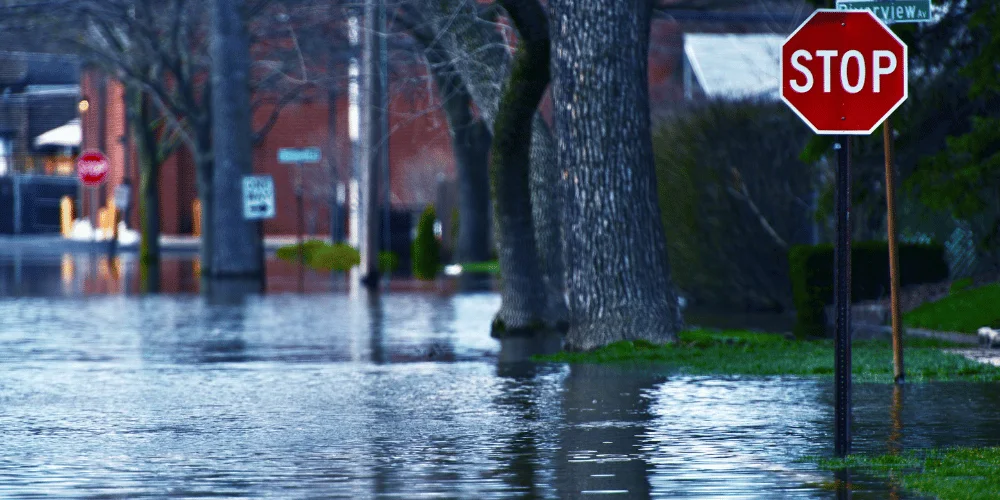Climate Crisis Alert: How Rising Coral Sea Temperatures Fueled Cyclone Alfred’s Devastation
Anúncios
The Perfect Storm: Understanding Cyclone Alfred
Cyclone Alfred stands out as a haunting reminder of nature’s fury, driven by an alarming rise in Coral Sea temperatures.
Scientists confirm that the unprecedented intensity of Cyclone Alfred was fueled by record-high temperatures in the Coral Sea, a direct outcome of escalating climate pollution over the past decades.
Record Temperatures Fuel Devastation
The Coral Sea experienced temperatures higher than ever before, leading to the extraordinary ferocity of Cyclone Alfred.
This extremes warming served as a catalyst, intensifying the cyclone well beyond typical expectations.
Cyclone Alfred’s winds and rains, amplified by these warmer ocean temperatures, wreaked havoc across an expansive 600km stretch of iconic Australian beaches.
From powerful wind-driven waves to the inundation caused by intense rainfall, the cyclone’s destructive force was unprecedented.
Unparalleled Rainfall and Flooding
Queensland bore the brunt of Cyclone Alfred’s wrath.
The cyclone triggered record-breaking rainfall and consequential flooding, smashing decades-old records in cities and towns across the state.
Brisbane saw its wettest day in over 50 years, with 275mm of rainfall overnight.
Hervey Bay experienced its most torrential downpour in 70 years, with more than 100mm in just one hour.
Nambour’s March rainfall shattered century-old records, illustrating the climate event’s profound impact.
 Floods in the city
Floods in the city
The Path of Destruction
As the cyclone advanced, it left a trail of destruction, submerging entire communities, tearing apart infrastructure, and displacing thousands of residents.
The powerful storm resulted in flooding rivers bursting their banks, leading to flash flooding which inundated tens of thousands of homes.
The extent of the devastation underscored the emerging pattern of increasingly severe weather events as a consequence of accelerated climate change.
The aftermath of Cyclone Alfred serves as a harrowing indicator of what the future holds if climate inaction continues.
The immediate impact and emergency response to this catastrophe were monumental, reflecting the urgency and severity of the situation.
Climate Change: The Hidden Force Behind the Destruction
Understanding the hidden force behind Cyclone Alfred’s unprecedented intensity requires us to delve into the deep-seated issues of climate change.
The horrifying destruction was, in no small part, driven by the Coral Sea absorbing vast amounts of heat.
The Unseen Enemy: Excess Heat
Our oceans have become unwitting victims of man-made pollution.
It’s staggering to consider that they absorb excess heat at the rate equivalent to five Hiroshima bombs every second.
This relentless absorption of heat leads to higher sea temperatures, which significantly impacts weather patterns.
Man-Made Pollution’s Role
Human activities, particularly the burning of coal, oil, and gas, are the primary culprits behind this upsetting phenomenon.
The carbon emissions from these activities form a blanket, trapping heat within our atmosphere.
Scientists, including atmospheric expert David Karoly from the University of Melbourne, assert that this trapped heat then gets absorbed by our oceans, wreaking havoc on marine ecosystems and fueling extreme weather events.
The Direct Impact on Cyclones
Hotter oceans mean more intense cyclones.
The excess heat energizes these storms, making them more powerful and destructive.
Cyclone Alfred stands as a grim testament to this reality.
As the Coral Sea hit record temperatures, the cyclone gathered strength, unleashing powerful winds and torrential rain.
The cyclone’s ferocity set new benchmarks for rainfall and flooding, causing widespread devastation.
The consequences of our decades of inaction on climate change are becoming increasingly clear.
Cyclone Alfred serves as a dire warning of what lies ahead.
It’s not just about addressing the immediate damage but also about understanding and mitigating the long-term impacts of our actions on both the environment and our communities.
Immediate Impact and Emergency Response
Cyclone Alfred’s wrath left a trail of immediate destruction that no one could ignore.
As its fierce winds and torrential rains pummeled Queensland, over 500,000 homes and businesses were plunged into darkness.
This massive power outage was one of the largest in the region’s history, leaving nearly half a million people scrambling to cope without electricity at a time when it was most needed.
The blackout impacted everything from communication networks to essential services, adding to the overall misery.
Record Emergency Calls and Swift Response
The Queensland State Emergency Service (SES) was inundated with a staggering number of emergency calls.
Within just 24 hours, the SES received a record-breaking 3,676 distress calls.
Teams were dispatched around the clock, assisting with everything from water rescues to securing homes and clearing debris.
This overwhelming response highlighted both the unprecedented nature of the event and the resilience of emergency services in the face of climate-induced disasters.
Swift Government Action and Relief
Recognizing the severity of the situation, the government moved swiftly to provide relief.
In a show of support, $80 million was quickly distributed in disaster relief payments.
These funds aimed to cover immediate needs, offering some financial respite to those whose lives were upended by the cyclone.
The payments included $1,000 for individuals and $400 for children, as well as a more complex 13-week payment plan for those unable to work.
These measures, while not solving all problems, made a tangible difference for many Australians struggling to rebuild their lives.
As the community began to pick up the pieces, it became clear that the impact of Cyclone Alfred would be felt for years to come.
With predictions that future cyclones might track further south, affecting more populated areas, it’s evident that the stakes are high.
The pressing need to address climate inaction has never felt more urgent.
The Economic Aftermath
Cyclone Alfred’s aftermath brought not only environmental destruction but also a staggering economic impact on Australia.
The clean-up costs alone have reached an estimated $1.2 billion, pushing the nation’s resources to their limits.
This massive expenditure has highlighted the severe financial strain that can result from inaction on climate change.
Strain on National Resources
The immense financial burden of the clean-up has sapped national resources.
This $1.2 billion cost includes clearing debris, repairing infrastructure, and addressing the immediate needs of the communities affected.
The sheer scale of the devastation required an overwhelming response, compelling the government and other organizations to quickly mobilize resources.
This response, while necessary, has led to reallocation of funds from other critical areas, demonstrating the far-reaching effects of such natural disasters.
Inflation and Economic Ripple Effects
One of the most pressing concerns following Cyclone Alfred is the potential surge in inflation.
The disaster inflicted significant damage on buildings and infrastructure, driving up construction and repair costs.
Additionally, crop damage has led to a rise in staple food prices, affecting everyday household expenses.
As supply chains are disrupted and rebuilding efforts intensify, the increased demand for construction materials and labor has pushed costs even higher, contributing to inflationary pressures across the economy.
Household Financial Impact
For Australian households, the cost of extreme weather events like Cyclone Alfred is tangible and immediate.
On average, each household has incurred an additional burden of approximately $1,532 in taxes and insurance costs.
This figure underscores the direct financial impact that climate change-induced natural disasters have on everyday citizens.
The costs of insurance claims, disaster relief payments, and increased prices for goods and services all combine to place a substantial financial strain on families across the nation.
Looking ahead, these unprecedented economic repercussions serve as a critical warning.
Addressing climate change is not just an environmental imperative—it’s an economic necessity that affects individual livelihoods and the broader stability of the national economy.
Future Implications and Warnings
Cyclone Alfred has proven that the impact of climate change is not just a future problem, but a current crisis.
One significant concern is that cyclones, fueled by warmer sea temperatures, are likely to track further south.
This means that heavily populated areas, including major cities along the New South Wales coast, might soon face the wrath of stronger and more frequent cyclones.
Economic Strain on Households
The economic toll from Cyclone Alfred has been staggering.
The current average household already bears an extra burden of $1,532 annually due to damages from extreme weather events.
By 2050, this cost is projected to rise to $2,500 per household.
The inflation surge from increased building costs and crop damages further underscores this economic strain.
It is clear that the financial burden will only grow unless effective climate action is taken.
Addressing the Climate Inaction
Experts have long warned about the repercussions of ignoring climate change.
The decade of inaction preceding Cyclone Alfred has shown us exactly what is at stake.
Immediate and significant efforts to reduce emissions from coal, oil, and gas are critical.
Not only will these actions help reduce the warming of our oceans, but they will also mitigate the risk of more intense and destructive weather events in the future.
The urgency of the situation cannot be overstated.
As we look to the future, the implication is clear: addressing climate change is not optional but a necessity for preserving both economic stability and the safety of populations at risk.







